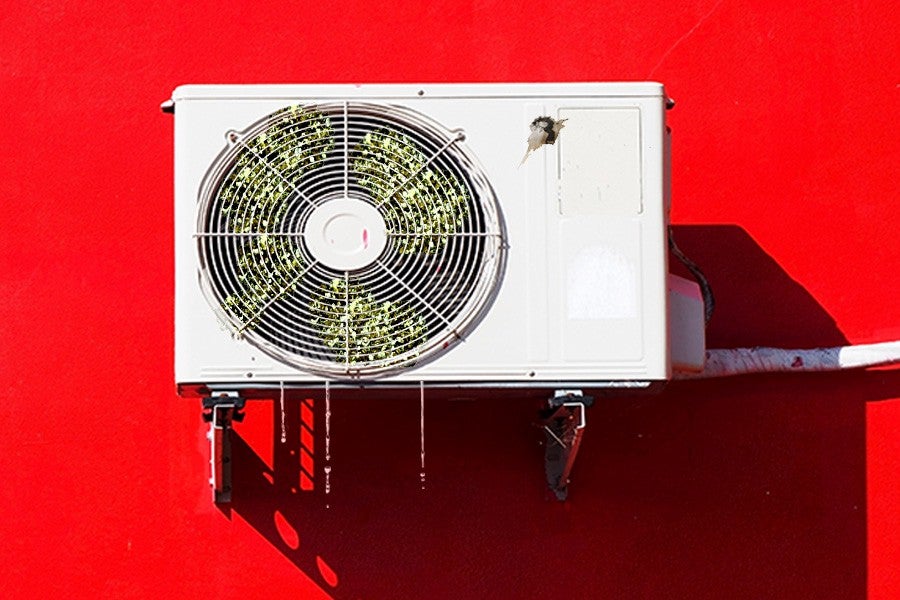It’s hot this summer. Historically hot! Destructive wildfires are raging around the world, and even in the places that aren’t burning, it sure as hell feels like it is. Thank science for air conditioning! Well, when you’re in front of it, at least, and not several storeys underneath, being dripped on.
If you spend any time at all walking in a big city in summer, you’ll know this grody sensation, a steady dripping of liquid that, at best, lands in your hair, and at worst, lands in your coffee or sometimes right in the Goddamn eye.

Worse still: In your open mouth. IT CAN HAPPEN.
So what’s in this stuff? Because look at those machines the drips are emanating from: Grimy, battered and caked with pigeon poop. Is the water gross? Is it contaminated? Is it even water?
The short answers: No; probably not; and yes, respectively.
Think of this stuff like the sweat on a beer bottle. What’s dripping off of an air conditioner is simply condensed water vapor, which comes from air that the machine sucked in from the outside (or inside). It’s just part of how an air conditioner works, and you could say that getting dripped on is part of the plan, too: Those window-mounted air conditioners sticking out of apartment windows all over New York City and elsewhere are designed to release this condensed water vapor to the outside — which is to say, onto you, me and everyone walking under it.
When it’s humid — which, in Chicago, NYC or most anywhere in the South or on the Eastern seaboard, is pretty much daily in the summer months — each of these AC units can drip as much as two gallons of water a day, which explains why getting pelted with AC juice is such a common occurrence when it’s hot out.
Despite how crappy those air conditioners look on the outside, I’m happy to report that the insides are generally not too gross. The machines use copper tubing to channel and dump the water vapor, and part of the reason for this is copper’s ability to withstand corrosion. This means you’re unlikely to get a big orange rust stain on your white shirt, or say, tetanus from a drip scoring a direct hit into your Jamba Juice. Even all the city grit and bird crap can be taken out of the equation, since the water tends to travel through that internal copper pipe and straight out of the unit, out of sight of the dust, feathers and assorted animal feces on the exterior.
The only real cause for concern is if that drain gets clogged, or the machine otherwise malfunctions, causing water to build up inside: As a general rule, where there’s stagnant water, there’s bacteria growing. Ever heard of a nasty infection called Legionnaires’ disease? It was named for the event where the first major outbreak occurred: The 1976 American Legion convention in Philly, after which 29 people died and 182 were hospitalized. Do you know how they all got sick? From a fucking hotel air conditioner! It’s true: The bacteria was breeding in the cooling tower of the Bellevue-Stratford Hotel’s massive air conditioning system.
Before you swear off AC forever, though, here’s the good news: This deadly bacteria doesn’t seem to grow in small air conditioning units for cars or homes — just in the industrial-size kind (i.e., not the kind that drips on you from apartment windows).
Aside from that, AC effluence is pretty safe, so the next time you get bombarded by a mystery drop from above, there’s probably no need to panic. It may not promise to bring you the kind of good fortune that getting shat on from above supposedly does, but at least it’s probably harmless.

